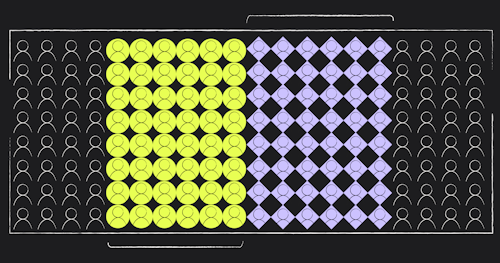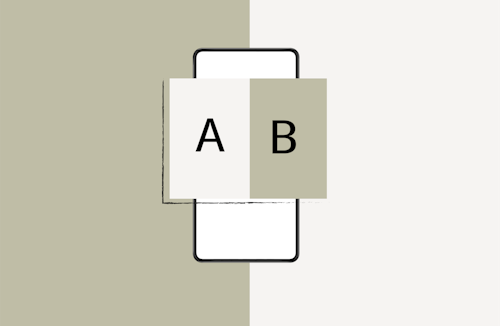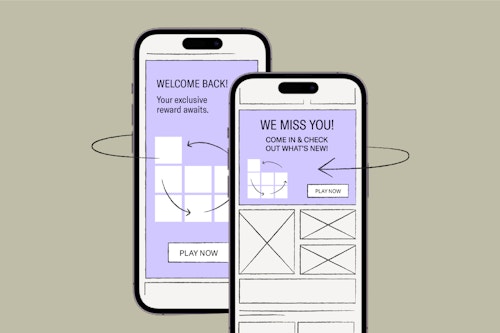The 5 levels of successful segmentation for app retargeting
October 31, 2023

You may have heard that data is essential to ensuring the success of an app retargeting campaign. But what does this mean, exactly?
According to Adjust findings, users who are part of app retargeting campaigns create 37% more revenue events in the first 30 days versus those from user acquisition campaigns. The key to achieving this type of performance is using data and insights you already have to turn noise into conversions.
In this article, we breakdown why segmentation is a non-negotiable part of improving your campaign performance and share how you can start building a segmentation strategy for app retargeting.
Let your app be your guide
How do you start identifying market segments and targets? Begin with the high-value or high-engagement actions you want to encourage. Ask yourself: “what are the first five things I want a user to do in my app?” The answer will provide the perfect blueprint for your segmentation strategy.
But once you have your blueprint, how do you actually know when to start app retargeting? This is when in-app event tracking comes into play.
An “event” is any action taken within your app that you want to track, from viewing a product page to completing a registration. A mobile-measurement partner (MMP) lets you keep tabs on your users’ behavior and learn how successful you are at steering audiences towards your goals. Data on user activity provides insights into what users do after the install and when they are likely to churn.
You will need this event data for Dynamic Product Ads (DPA) – an ad format which shows your users personalized creatives based on their in-app behavior and allows you to direct them to a specific part of your app via deep links.
Key concepts for getting started with segmentation
There are a few key concepts to keep in mind when creating segments. Think about each of these market segmentation examples in relation to your app, and whether a paid or owned media approach makes sense.
- Inactive users: Remind users of their already installed applications. The aim here is to boost engagement and retention.
- Upselling: Show users the benefits of upgrading their membership (if possible), as well as new apps, or updates.
- Heavy shoppers: Drive repeated conversion by promoting new products that may interest your spend-heavy users.
- Conversions: Encourage users to return to your app and fulfill their conversion potential, whether their cart is full or they haven’t completed their registration
It’s important to get specific and consider your app’s vertical. If you’re marketing for a lifestyle brand focusing on beach products, for example, users may be interested in subscribing to your update on weather conditions in their area. Alerting users to your feature after they’ve signed up or viewed some product display pages could drive more engagement with your app.
Timing is everything
Funnel analysis is an excellent way to identify pain points — but it also provides a retargeting opportunity. If you set up in-app event tracking to correspond with markers in your funnel, consider adding prompts for users to return to complete the next step in your app. Cart abandonment and the impact of app retargeting on conversion rates become easy to analyze when you create highly targeted audiences based on a user’s place in your app’s journey.
Follow the money
General marketing approaches might work best when targeting a user near the top of your funnel, but as they move through the app your messaging should become more precise. It’s worth considering a more targeted approach when they are closer to a conversation.
One of the most tried and tested frameworks for customer analysis is RFM (recency, frequency, monetary). First outlined by Jan Roelf Bult and Tom Wansbeek, in a 1995 issue of Marketing Science, RFM is an example of behavioral segmentation marketing.
When applied to mobile marketing, the recency strand of RFM monitors the time since the user’s last interaction with the brand — when was the user last active? When did they last make a transaction?
Frequency examines how often the user interacts with your app. Are they a daily user? It’s important to separate loyal users from people who only opened the app once or twice.
Lastly, it considers the monetary value of the user’s actions and separates high spending users from lower spenders or first-time users who are still only browsing.
As an example, let’s split users into three groups per category. For recency, we have very recent session, somewhat recent session, and inactive. For frequency, we have very frequent, somewhat frequent and infrequent. An for monetary, we have big spender, medium spender or no spend. A user can have any combination of these three traits.
Different types of customers deserve different types of approaches. How we target a user that has a somewhat recent session, but was previously a very frequent user and a big spender is very different to how we will approach a user that opened the app once, never bought anything and churned.
There are other behavioristic segmentation examples, but RFM is a good place to start.
However, RFM isn’t just useful to consider when creating segmentation – it’s also a good guide on when to pounce. When a user’s RFM starts to drop, this is a perfect time for an intervention. If you see a user that was previously a very frequent user suddenly stop coming back, retargeting can help keep them in your app. Keeping your user relationships ticking over means you can keep your churn rate low.
Known or unknown?

Segmentation also allows you to A/B test campaigns, creatives and strategies. If you create an audience segment, try splitting your users into two groups and running a retargeting campaign with a different creative for each group. With this experiment, you’ll see how that creative performs among identical sets of users and get valuable insights for future campaigns.
This is particularly useful when calculating incrementality. Performance marketers often want to measure the added value of their campaigns. In a world of hard sciences, the ideal way to measure impact is a randomized control trial. Incrementality helps you measure an incremental lift, showing you the real impact of your marketing campaigns versus a control.
Get creative with campaigns
App retargeting is a powerful tool that is limited only by how creatively you can leverage it. Segmentation drives performance for retargeting campaigns and provides the data-driven metrics needed to evaluate and iterate upon success.
Whether your campaign is event-linked or based on activity, there are plenty of useful options to consider, some of which ask questions about how your brand views itself and how it sets goals.
By removing a lot of the difficulty around creating tailored campaigns, marketers are free to focus more on strategy, rather than being frustrated by the process.
Get the latest app marketing insights
Join our newsletter





